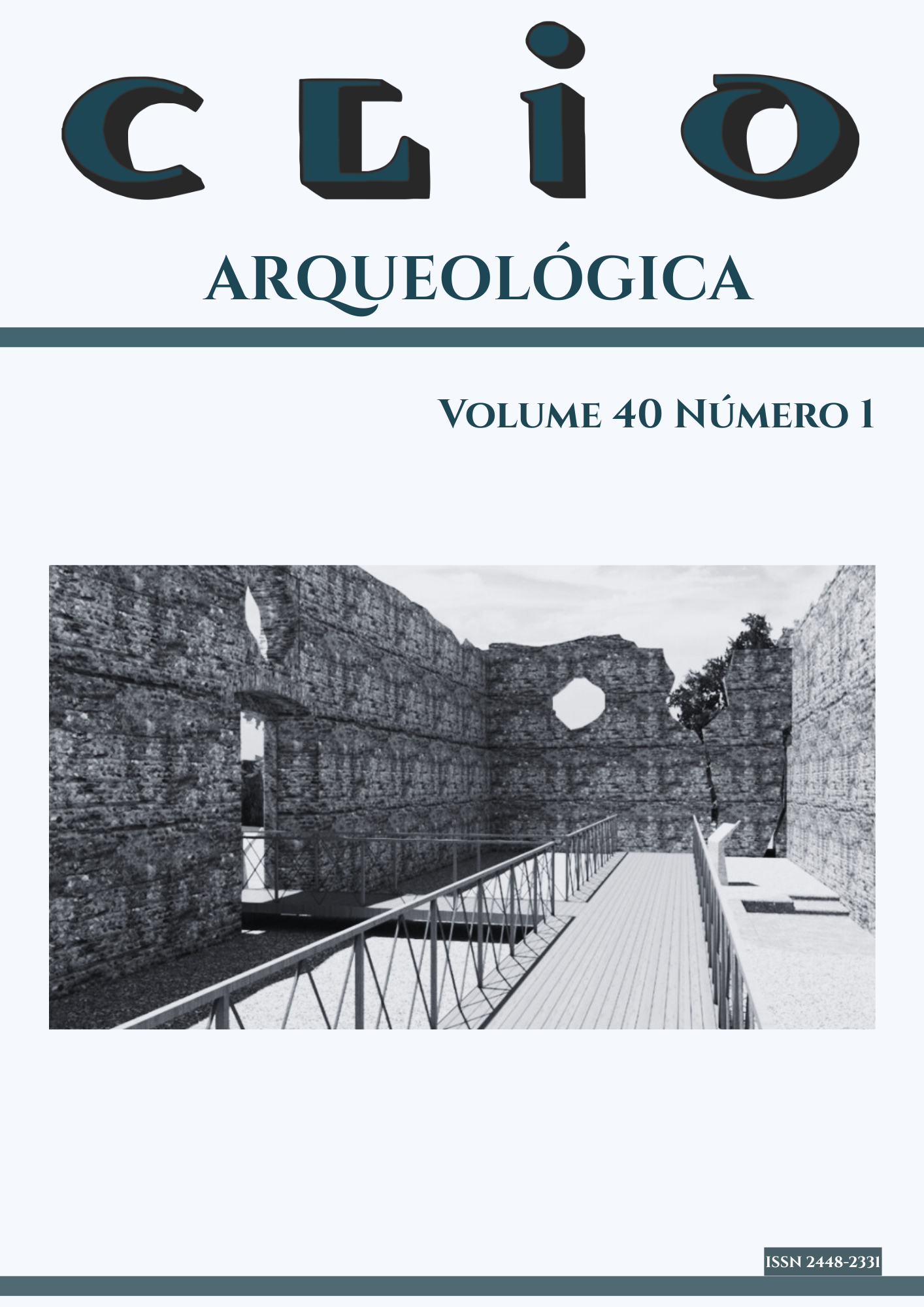Some Archaeological Sites in the Directly Affected Area of the Marini Hydroelectric Generating Station (CGH): Evidence of Human Occupation Near the Colorado Stream
Identification and Delimitation of Archaeological Sites in the Directly Affected Area of the Marini Hydroelectric Generating Station
DOI:
https://doi.org/10.51359/2448-2331.2025.265568Keywords:
Archaeological prospection, Alta Floresta d'Oeste-RO, Amazonian ceramicsAbstract
The archaeological research conducted in the Directly Affected Area (ADA) of the Marini Small Hydroelectric Plant (CGH), located in Alta Floresta d’Oeste, Rondônia, revealed ceramic remains and patterns of pre-European contact human occupation in elevated riparian areas near the Colorado Stream. The study employed methods such as archaeological survey, geoprocessing, and stratigraphic analyses to identify and delineate two main sites, named Marini I and Marini II. The results suggest an adaptation to the Amazonian environment, with subsistence strategies based on the utilization of water resources and specific land-use practices. This research enhances the understanding of cultural dynamics in southwestern Amazonia and suggests the existence of potential interaction networks among ancient populations.
References
ALMEIDA, F. O. 2013. A tradição policrômica no alto rio Madeira. Tese (Doutorado) – Universidade de São Paulo, São Paulo.
BARTHEM, R. B.; FABRÉ, N. N. 2004. Biologia e diversidade dos recursos pesqueiros na Amazônia. In: RUFFINO, M. L. A pesca e os recursos pesqueiros na Amazônia. Manaus: Ibama, p. 17-62.
BASTOS, R. L.; SOUZA, M. C. de. 2010. Normas e gerenciamento do patrimônio arqueológico. 3ª ed. revisada e ampliada. São Paulo: Superintendência Regional do IPHAN.
BINFORD, L. R. 1962. Archaeology as Anthropology. American Antiquity, n. 28, p. 217-25.
CLEMENT, C. R. et al. 2015. The domestication of Amazonia before European conquest. Proceedings of the Royal Society B, v. 282, n. 1812, 20150813.
CONOLLY, J.; LAKE, M. 2012. Geographical Information Systems in Archaeology. Cambridge: Cambridge University Press.
COTA, T. S.; CARAMELLO, N. D. A.; SCCOTI, M. S. V. 2021. Caracterização ambiental e socioeconômica da bacia hidrográfica do Rio Branco e Colorado, Rondônia, Brasil. Revista Ibero-Americana de Ciências Ambientais, v. 12, n. 1, p. 506-519.
DENEVAN, W. M. A bluff model of riverine settlement in prehistoric Amazonia. Annals of the Association of American Geographers, v. 82, n. 3, p. 369-385, 1992.
DUNNELL, R. C.; DANCEY, W. S. 1983. The siteless survey: A regional scale data collection strategy. Advances in Archaeological Method and Theory, v. 6, p. 267-287.
FURQUIM, L. P. et al. 2018. Facing Change through Diversity: Resilience and Diversification of Plant Management Strategies during the Mid to Late Holocene Transition at the Monte Castelo Shellmound, SW Amazonia. Journal of Archaeological Science: Reports, v. 18, p. 821-831.
GOULDING, M.; BARTHEM, R.; FERREIRA, E. 2003. The Smithsonian Atlas of the Amazon. Washington: Smithsonian Books.
MEGGERS, B. J. 1971. Amazonia: Man and Culture in a Counterfeit Paradise. Chicago: Aldine.
MILLER, E. T. 1987. Inventário arqueológico da bacia e sub-bacias do rio Madeira, 1974-1987. Porto Velho: Consórcio Nacional de Engenheiros Construtores S.A..
MILLER, E. T. 1992. Arqueologia nos Empreendimentos Hidrelétricos da Eletronorte. Brasília: Eletronorte.
MILLER, E. T. 2012. A Cultura Cerâmica do Tronco Tupí no alto Ji-Paraná, Rondônia, Brasil: Algumas Reflexões Teóricas, Hipotéticas e Conclusivas. Revista Brasileira de Linguística Antropológica, [S. l.], v. 1, n. 1, p. 35–136. DOI: 10.26512/rbla. v1i1.12288.
MONGELÓ, G. 2020. Ocupações humanas do Holoceno inicial e médio no sudoeste amazônico. Boletim do Museu Paraense Emílio Goeldi. Ciências Humanas, v. 15, n. 2, p. 1-23. DOI: 10.1590/2178-2547-BGOELDI-2019-0079.
NEVES, E. G. 2006a. Arqueologia da Amazônia. São Paulo: Edusp.
NEVES, E. G. 2006b. Sob os tempos do equinócio: oito mil anos de história na Amazônia Central. São Paulo: Editora Hucitec.
NEVES, E. G. et al. 2020. The archaeology of the Upper Madeira within the archaeological context of Amazonia. Boletim do Museu Paraense Emílio Goeldi. Ciências Humanas, v. 12, n. 2, p. 143-166.
PLOG, S.; PLOG, F.; WAIT, W. 1978. Decision making in modern surveys. American Antiquity, v. 43, p. 5-19.
ROOSEVELT, A. C. 1991a. Moundbuilders of the Amazon: Geophysical Archaeology on Marajo Island, Brazil. San Diego: Academic Press.
ROOSEVELT, A. C. 1991b. Paleoindian cave dwellers in the Amazon: the peopling of the Americas. Science, v. 272, n. 5260, p. 373-384.
WATLING, J.; SHOCK, M.; NEVES, E. G. et al. 2018. Direct archaeological evidence for Southwestern Amazonia as an early plant domestication and dispersal centre. PLoS One, v. 13, n. 7, p. 1-25.
ZIMPEL, A. L. 2008. Cerâmica e Tradição no Sudoeste da Amazônia: O Caso da Fase Bacabal. Dissertação (Mestrado) – Universidade de São Paulo, São Paulo.
ZIMPEL, A. L. 2018. Padrões de assentamento e uso dos recursos aquáticos na fase Bacabal: um estudo no médio Guaporé. São Paulo: FAPESP.
Downloads
Published
Issue
Section
License
Copyright (c) 2025 Caio César Martins de Souza, Mariana Budnik Chinikoski , Carla Cristina Cassiano

This work is licensed under a Creative Commons Attribution 4.0 International License.
A submissão de originais para a Clio Arqueológica implica na transferência, pelos autores, dos direitos de publicação impressa e digital. Os direitos autorais para os artigos publicados são do autor, com direitos da revista Clio Arqueológica sobre a primeira publicação. Os autores somente poderão utilizar os mesmos resultados em outras publicações mediante citação do nome da Clio Arqueológica como publicação original.
Em virtude do acesso aberto este periódico, permite-se o uso gratuito dos artigos com finalidades educacionais e científicas, desde que citada a fonte conforme as diretrizes da licença Creative Commons.
Autores que submeterem um artigo para publicação na Clio Arqueológica, concordam com os seguintes termos:
a. autores mantém os direitos autorais e concedem à revista o direito de primeira publicação, sem pagamento, com o trabalho simultaneamente licenciado sob a Licença Creative Commons Attribution que permite o compartilhamento do trabalho com reconhecimento da autoria e publicação inicial nesta revista;
b. autores têm autorização para assumir contratos adicionais separadamente, para distribuição não-exclusiva da versão do trabalho publicada nesta revista (ex.: publicar em repositório institucional ou como capítulo de livro), com reconhecimento de autoria e publicação inicial nesta revista;
c. autores têm permissão e são estimulados a publicar e distribuir seu trabalho on-line (ex.: em repositórios institucionais ou na sua página pessoal) a qualquer ponto antes ou durante o processo editorial, já que isso pode gerar alterações produtivas, bem como aumentar o impacto e a citação do trabalho publicado;
d. as ideias e opiniões expressas no artigo são de exclusiva responsabilidade do autor, não refletindo, necessariamente, as opiniões da revista.









